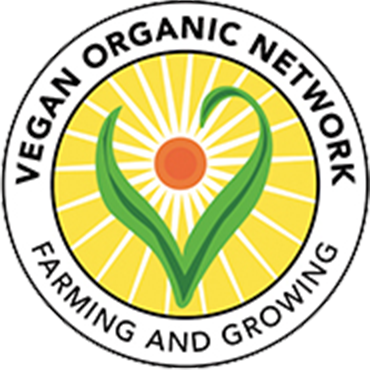My Experience with the Online Learn Veganic Gardening Course

specifics for your own region, such as first and last frost dates, and what grows well in your region.
A highlight for me was the weekly Q&A session which was available at two different times to accommodate people in different time zones. Meg and Stef hosted the video meetup where we were encouraged to ask questions about our specific issues, chat with other participants, share pictures of our gardens and discuss our gardening highs and lows. It was great to get specific advice from Meg and Stef as well as brainstorm ideas and learn from the experiences of other vegan gardeners. I really enjoyed connecting with people from all over the world. As a vegan gardener it is easy to meet people who garden but it’s not easy to find people who garden veganically. The weekly Q&A gave us all a chance to feel normal about discussing ways to fertilise our gardens without animal products, and to not feel like weirdos when talking about ways to deal with pests without killing them.



• How to grow potatoes using just hay
• Different recipes for creating potting soil
• The self-fertilising garden
• How to make compost on a balcony
• Carbon/nitrogen ratios
• Plant-based sources of fertility, such as hay, leaves, seaweed, comfrey, nettles, green manures and many more
• Plant families and their characteristics


In the last year I’ve moved from Los Angeles back to the UK, my home country. I’ve been lucky enough to move into a house with a large greenhouse and many raised beds. I’ve applied many of the techniques I learned on the course, especially as the beds really needed some nutrients. I’ve had to learn how to source vegan materials here, which is hard when bags don’t detail their source ingredients as they do in the US. I talked with Meghan during the Q&A and she helped me find sources of veganic compost and other fertilising options available in the UK, which she had learned about from other UK course participants. I’m experiencing different pests and the much shorter growing season so taking the course again has been beneficial. Now I’m learning about frost dates and slugs which didn’t trouble me in Los Angeles where it was always warm and I could garden year-round.
Whether you are a new gardener or an experienced gardener the Learn Veganic course is a great way to learn and connect with other vegan gardeners. The course materials are available for a year and I find
myself referring back to them frequently. There’s also a Facebook group for all previous participants where we can share our successes and failures and ask questions. I highly recommend joining the course.
The next Learn Veganic course will be starting in early 2024. You can get all the details by joining the newsletter at www.learnveganic.com.



